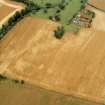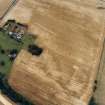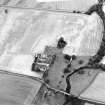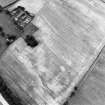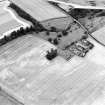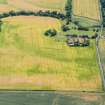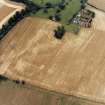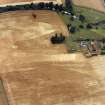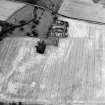Pricing Change
New pricing for orders of material from this site will come into place shortly. Charges for supply of digital images, digitisation on demand, prints and licensing will be altered.
Upcoming Maintenance
Please be advised that this website will undergo scheduled maintenance on the following dates:
Thursday, 9 January: 11:00 AM - 3:00 PM
Thursday, 23 January: 11:00 AM - 3:00 PM
Thursday, 30 January: 11:00 AM - 3:00 PM
During these times, some functionality such as image purchasing may be temporarily unavailable. We apologise for any inconvenience this may cause.
Abbey, Old School
School (18th Century)
Site Name Abbey, Old School
Classification School (18th Century)
Canmore ID 234524
Site Number NT57SW 363
NGR NT 53327 74682
Datum OSGB36 - NGR
Permalink http://canmore.org.uk/site/234524
- Council East Lothian
- Parish Haddington
- Former Region Lothian
- Former District East Lothian
- Former County East Lothian
NT57SW 363.00 53327 74682
NT57SW 363.01 53333 74669 Central Building
NT57SW 363.02 53337 74663 South Building
Abbey village probably late 18th century compact group of three buildings,, though parts may be older. All are two-built of random rubble with some evidence of harling. Red pantiled roofs.
The Valuation Roll for 1916-17 shows that the mill was owned by The Earl of Wemyss and March.
The 'village' of Abbey is depicted on the 1st edition of the OS 6-inch map (Haddingtonshire 1855, sheet 10) which shows eight roofed buildings at this location and the Object Name Book of the Ordnance Survey (ONB) describes it as a ' small hamlet consisting of a few houses in bad repair and are occupied by working people.
At this place in 1178 Countess of Northumberland, mother of Malcolm IV and William the Lion, Kings of Scotland, founded and richly endowed a convent or priory of Cistercian nuns, which was deidicated to the Virgin Mary. And here on the 7th July 1548 the Parliament of Scotland was convened and their consent was obtained to the marriage of the young Queen Mary with the Dauphin, and her education at the court of France. See the Statistical Account of Scotland (OSA 1790-) .
A portion of the burial ground belonging to the Abbey still remains and was used as a burial ground within the last twenty years, but is now planted with wood and disused as a cemetery' (Name Book 1854). The building nearest the road is annotated on the 6-ich scale map as a 'School'.
The current OS 1:2500 scale digital map shows eight buildings and the 'burial-ground'.
Information from RCAHMS (DE), July 2006; Historic Scotland Listing document.
Compact group of 3 buildings, probably dating in essence from later 18th century, though parts may be older. All 2-storey, rubble built, evidence of harling. Red pantiled roofs. BUILDING (OLD SCHOOL): substantially ruinous, in 2 sections, sandstone rubble. CENTRAL BUILDING: originally probably 4 dwellings. Mostly squared rubble of conglomerate ("clinkstone", very friable). S BUILDING: in poor condition, 3-bay on front (S) elevation, 3 windows to 1st, door flanked by 2 windows to ground.
Croal, writing in 1873, states that the Village of Abbey was "....much diminished in extent in recent years" and mentions "...a long row of miserable thatched cot-houses" which had been recently condemned. The School is marked on the map of 1854, but is thought to have closed soon afterwards. A photograph taken before 1907 shows the western end already roofless, though with gable and walls largely intact. The original Abbey, of which no trace appears now remain, lay a short distance to the E. It was founded in 1178 as a priory and convent by Ada Countess of Northumberland, mother of Kings Malcolm IV and William. The Scots parliament met here on 7 July 1548 and agreed a treaty with France whereby the young Queen Mary would marry the French Dauphin. The Abbey was Cistercian and seals of 1245 and 1569 are extant - "Capituli Sante Marie de Hadintoun". It was probably abandoned around the end of the 16th century, and Daniel Defoe could note "...remains of an old Nunnery, not a stone of which has rested upon another within living memory". There is anecdotal evidence that the deep red stones incorporated irregularly in the structure may derive from the original Abbey. (Historic Scotland)
















